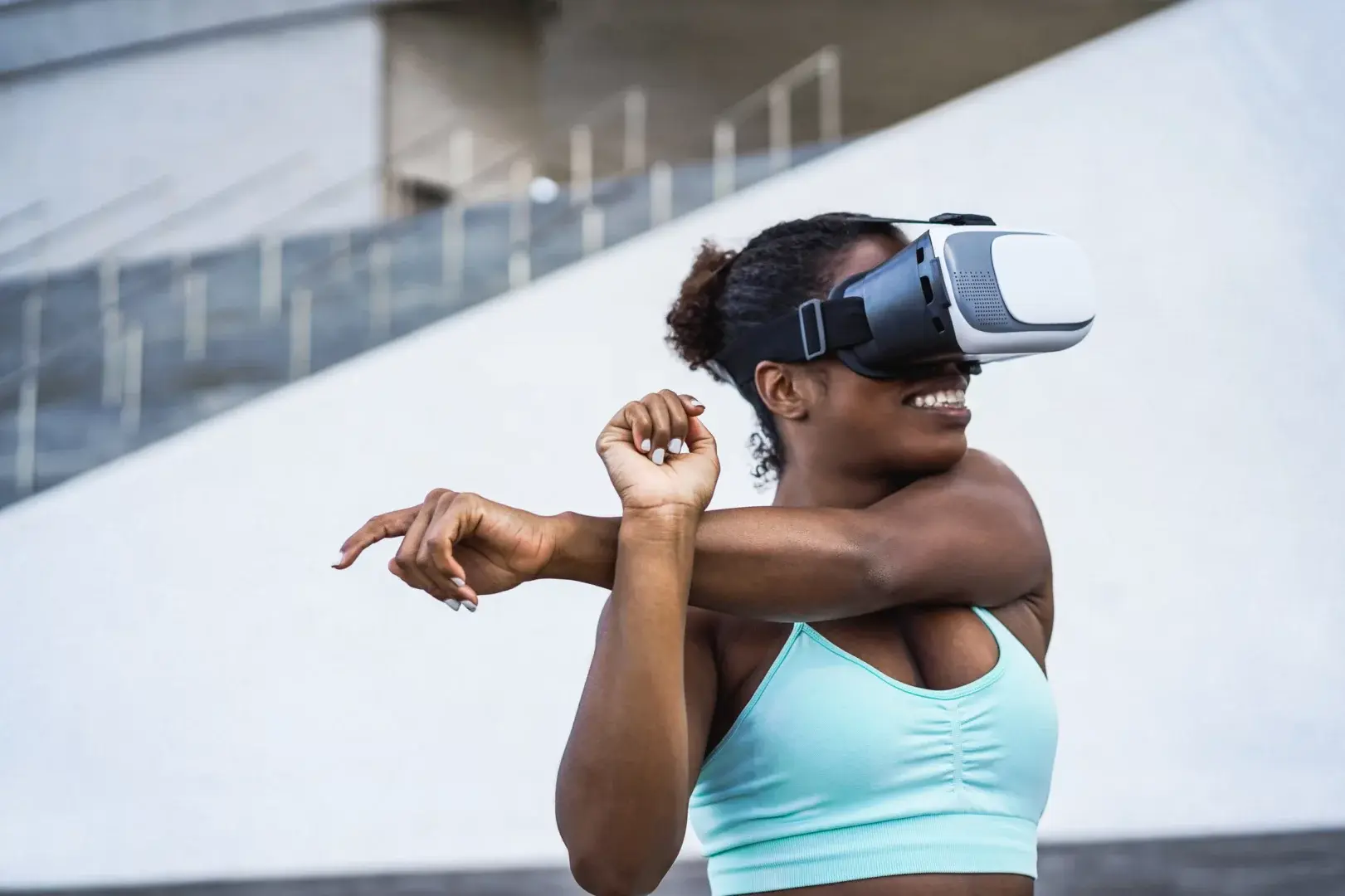Sports have always been more than just competition—they are a reflection of society, culture, and human ambition. From the ancient Olympic Games in Greece to today’s global tournaments watched by billions, sports continue to unite people and inspire excellence. But the way we train, compete, and consume sports has changed dramatically in recent years. Driven by technology, data, and new values around health and inclusivity, the modern sports landscape is evolving faster than ever.
This article explores how technology, training methods, and culture are reshaping the world of sports—and what the future holds for athletes and fans alike.
1. Technology as the New Coach
In the 21st century, technology has become the ultimate game-changer in sports. What used to rely solely on intuition and experience is now guided by data analytics, wearable tech, and AI-driven performance tools.
Athletes wear smartwatches, GPS trackers, and biometric sensors that monitor every heartbeat, stride, and calorie burned. Coaches analyze this data to identify patterns, prevent injuries, and tailor training programs for each individual.
In football, for example, systems like Catapult Sports track player movement, distance covered, and exertion levels during practice and matches. In tennis, tools like Hawk-Eye and AI match analytics provide precise feedback on shot placement and strategy. Even in running, smart shoes from brands like Nike and Adidas collect data to enhance performance and reduce injury risk.
Technology has made sports more scientific and personalized. It’s no longer just about hard work—it’s about smart work.
2. The Rise of Data-Driven Training
The days of one-size-fits-all training are over. Today, elite athletes use data science and sports medicine to perfect every detail of their performance.
Training programs now combine biomechanics, physiology, and nutrition to create a holistic approach. Coaches rely on performance metrics—like lactate thresholds, recovery rates, and oxygen levels—to fine-tune workouts.
In team sports such as basketball or soccer, video analysis software breaks down plays in slow motion, helping players improve positioning and decision-making. In individual sports like cycling or swimming, performance modeling predicts how small changes in pacing or form can impact results.
These scientific insights are not limited to professionals. Amateur athletes and fitness enthusiasts use mobile apps like Strava, MyFitnessPal, and Whoop to track progress and mimic the training styles of the pros.

3. Mental Health: The New Frontier in Sports
For decades, sports celebrated physical toughness—but today, mental strength is just as vital. Athletes are increasingly speaking out about mental health challenges, breaking the stigma that once surrounded this topic.
High-profile figures like Simone Biles, Naomi Osaka, and Michael Phelps have openly discussed anxiety, depression, and burnout. Their honesty has sparked a global conversation about the pressure of elite competition and the importance of psychological support.
As a result, many sports organizations now employ sports psychologists and mindfulness coaches as part of their training teams. Techniques such as visualization, meditation, and cognitive behavioral therapy (CBT) are used to boost confidence, focus, and emotional balance.
The shift toward mental wellness marks a new era—one where athletes are valued not only for their performance, but also for their humanity.
4. Women in Sports: Breaking Barriers and Redefining Success
The rise of women’s sports is one of the most exciting developments of the past decade. Once overlooked, female athletes are now commanding global audiences, major sponsorships, and widespread recognition.
Events like the FIFA Women’s World Cup, the WNBA, and women’s tennis tournaments have shown that women’s sports can generate massive excitement and revenue.
Stars like Serena Williams, Megan Rapinoe, Alexia Putellas, and Iga Świątek have become global icons, inspiring new generations of girls to pursue athletic dreams.
Moreover, efforts toward equal pay and representation are reshaping professional sports organizations. The U.S. Women’s National Soccer Team, for instance, won a historic equal pay agreement in 2022, setting a precedent for gender equality in sports.
Brands and media outlets are also stepping up, giving more visibility to women’s leagues and stories. This change isn’t just about inclusion—it’s about recognizing excellence in all its forms.
5. The Globalization of Sports
Sports have become a universal language, transcending borders, cultures, and backgrounds. Thanks to globalization and digital media, fans can follow teams and athletes from anywhere in the world.
Streaming platforms and social media have democratized access, allowing fans to watch live matches, highlights, and behind-the-scenes content instantly. Athletes themselves are now global influencers, building personal brands and connecting directly with millions of fans online.
This global reach has created new opportunities—and new challenges. Leagues such as the NBA, Premier League, and UFC now host games and events worldwide to grow their international fan bases. At the same time, cultural differences and scheduling demands require adaptation and sensitivity.
Yet the result is clear: sports are no longer limited by geography. Whether it’s a football match in Tokyo or a marathon in New York, the audience is truly global.
6. Sustainability in Sports: A Greener Future
As awareness of climate change grows, the sports world is also embracing sustainability. Major organizations are taking steps to reduce carbon footprints, minimize waste, and promote eco-friendly practices.
The Olympic Games have begun integrating sustainability goals—such as reusing existing venues and prioritizing renewable energy. Formula 1 has pledged to become carbon-neutral by 2030, while sportswear companies like Adidas and Nike are investing in recycled materials and sustainable production.
Even local clubs and stadiums are getting involved, with solar-powered arenas, water recycling systems, and zero-plastic policies becoming more common.
Sustainability is not just a moral responsibility—it’s also a way for sports to influence fans and communities toward positive environmental change.
7. Esports: The New Digital Arena
A decade ago, few would have imagined that video gaming would become a recognized sport. Today, esports attracts millions of players and fans worldwide, with professional teams, sponsorships, and multi-million-dollar tournaments.
Games like League of Legends, Fortnite, and Counter-Strike have built thriving competitive ecosystems. Esports athletes train rigorously, maintain strict diets, and undergo mental conditioning—just like traditional sports professionals.
The inclusion of esports in major events like the Asian Games and discussions about its role in the Olympics signal a major cultural shift. As technology continues to blur the line between physical and digital competition, esports are redefining what it means to be an athlete in the modern era.
8. The Fan Experience: Immersive and Interactive
Fans today demand more than just watching—they want to experience. Virtual reality (VR), augmented reality (AR), and 360-degree streaming are revolutionizing how people engage with sports.
Imagine watching a match through a VR headset from a front-row seat or analyzing real-time stats via AR overlays. Teams and leagues use these technologies to create immersive fan experiences that go beyond the stadium.
Social media platforms also play a major role in fan engagement. Short-form content, behind-the-scenes footage, and interactive polls make supporters feel closer to their favorite athletes than ever before.
As digital engagement grows, fans are becoming active participants in the sports world—not just spectators.
9. The Future of Sports: Innovation, Inclusion, and Integrity
Looking ahead, the world of sports will continue to evolve at a rapid pace. Advances in biotechnology, AI coaching, and smart equipment will push the boundaries of human performance even further.
At the same time, sports will face new challenges—such as maintaining integrity, fair play, and inclusivity in an age of rapid innovation. Governing bodies will need to balance progress with ethics, ensuring that technology enhances, rather than replaces, the spirit of competition.
But one thing will never change: the power of sports to inspire, unite, and elevate the human spirit.

Conclusion
Modern sports are a fascinating blend of tradition and innovation. Technology has made athletes faster, training smarter, and fans closer to the action than ever before. From mental health awareness to gender equality and sustainability, the world of sports is embracing progress in every direction.
Whether on the field, in the gym, or in the virtual arena, sports remain a universal force that connects people across the globe. The future will bring new challenges and new champions—but the essence of sport—passion, perseverance, and pride—will always endure.

